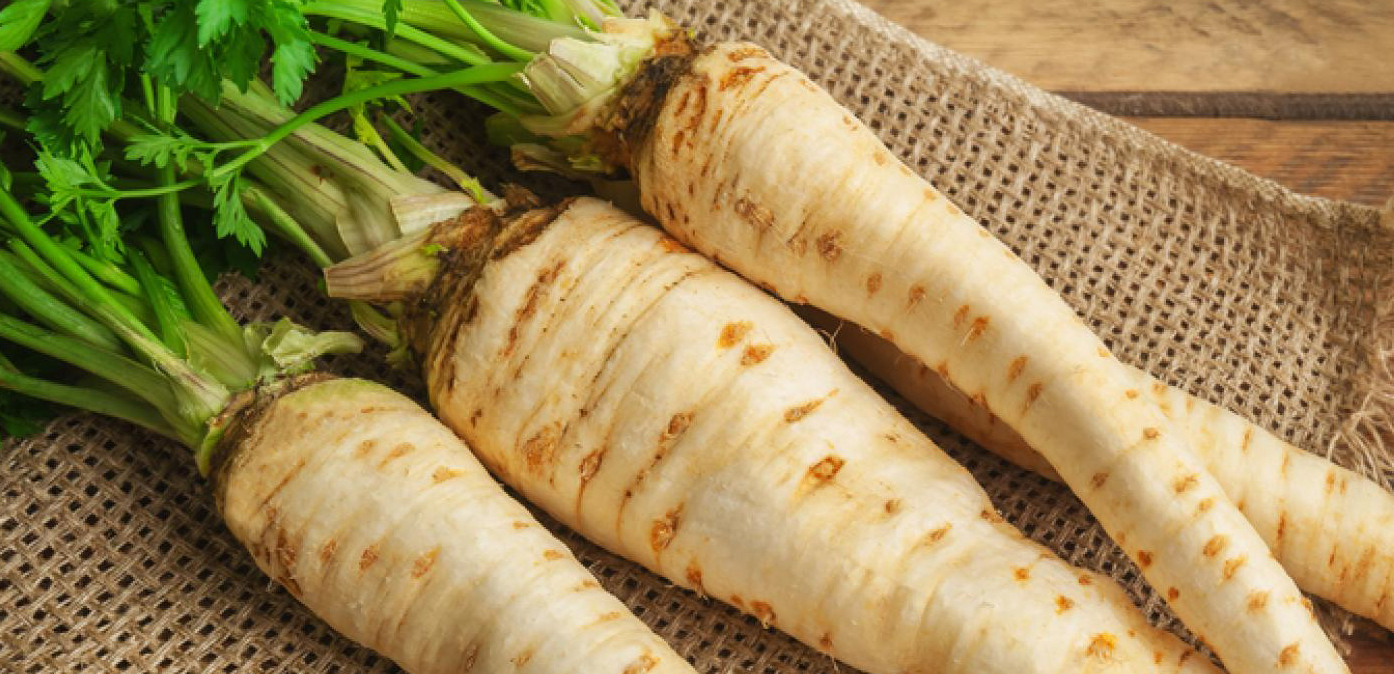The varieties of edible plants available to us are almost infinite. Some resemble the vegetables we are used to in our daily life, others are really particular by their taste or their shape, others are forgotten species and maybe they were used in our kitchen in the past, and finally there are those that are unknown because they come from other countries.
However, there is always time to discover or rediscover them and to learn about their properties and uses in cooking and elsewhere, so here is a tour of 8 unusual vegetables to learn about and perhaps think about growing one of them, or several, in your own garden.
Parsnip
Parsnip sativa, belonging to the Apiaceae family, is a biennial vegetable native to the Mediterranean area. It has an herbaceous and hollow stem, the flowers are yellow and the roots are particularly fleshy and of creamy white color (the more rigid and long the winter, the more these roots develop).
It is these last ones that are edible, there taste is soft and slightly sweetened. The roots are to be harvested after the first frost of the season and look like a carrot.
It is possible to eat parsnips raw, but it is preferable to cook them to make them more digestible and pleasant to the palate. It is a vegetable rich in phytonutrients, vitamins (C, K, E and group B), minerals (iron and calcium) and especially in fiber (100 g of root provide 13% fiber). It also contains many antioxidants and according to some studies, it has anti-inflammatory and antifungal properties.
Goa Bean
Its scientific name is psophocarpus tetragonolobus. It is known as the asparagus pea (it resembles the flavor of this plant) or the winged bean (because of its shape). It is a highly nutritious legume whose origin has not yet been defined, it is thought to have originated in Mauritius island and then spread to New Guinea and Indonesia.
The pods have the section of a four-pointed star and can reach 15 cm in length, although harvesting should be done when they are small (3-5 cm). The whole plant is edible: with the seeds it is possible to obtain an oil similar to that of soy; with the dried grains it is possible to prepare a fermented food called tempeh.
The leaves and roots can be cooked in different ways, the young pods can also be eaten raw. The flowers are used as a dye or to flavor soups and mushroom dishes. The plant is a climbing plant that can reach 4 meters in height and all its parts have a high protein value (more than 35%).
In Indonesia, it is a very valuable plant: besides being used in traditional cooking, the milk of this legume, combined with flour, is used to feed children with protein deficiency.
Finally, it is an excellent nitrogen fixer, which improves the chemical and physical fertility of the soil.
Abyssinian Cabbage
Abyssinian cabbage or brassica carinata, also known as Ethiopian mustard, belongs to the brassica family. Its leaves resemble those of broad-leaf mustard, its flowers are yellow and form long, and the whole plant is edible.
The young leaves are eaten as a cutting vegetable, raw or cooked; the buds, particularly tasty, look like small broccoli and can be eaten after cooking.
This type of vegetable also improves the soil from a chemical and structural point of view. In addition, some studies have shown that it can be used to obtain an oil that, once processed, becomes an excellent biodiesel.
Biodegradable, it does not contain sulfur, it reduces the smoke of the exhaust and there is no risk of auto-combustion. It adapts easily to the culture in pot.
White Eggplant
The white eggplant is a variety of eggplant characterized, as its name suggests, by the white-ivory color of its fruits. Eggplants (Solanum mologena) belong to the Solanaceae family. They are annual herbaceous plants that need a mild and warm climate.
Indeed, their growth stops when the temperature is lower than 12°. The white eggplant, whose origin is uncertain (it is thought to come from Turkey) unlike the purple eggplant, has a very low presence of seeds, its taste is more delicate and before cooking it is not necessary to dip it in salted water because it does not have the typical bitter aftertaste.
It should not be eaten raw because of the high amount of solanine, an irritating substance that is reduced by cooking.
Here you go, you now know some of the unusual vegetables to plant in your garden. What else do you already grow at home? Let us know in the comments below.



